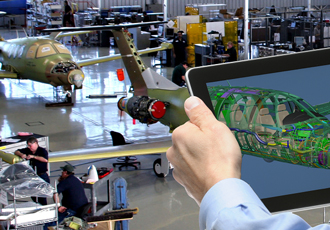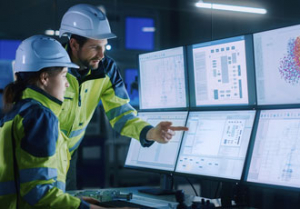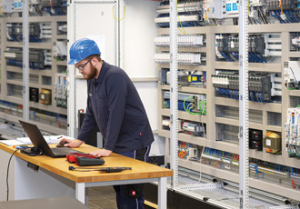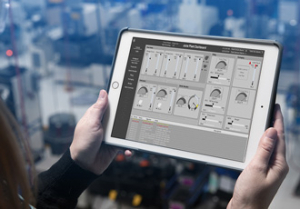Make an impact in the real world with Digital Twins

Models so accurate they’re a digital twin of the product you’re creating can help you throughout the design and development process. 1D models can help you determine the best architecture for your multi-physics system, 3D models can help you design into the details, and testing can help you improve modelling realism.
By Zvi Feuer, Senior Vice President, Manufacturing Engineering Solutions at Siemens and Zvika Weissman, Industries & Production Management Director at Siemens Industry.
Combining all the three technologies gives you the highest possible accuracy while making design decisions.
But in today’s world the design job isn’t done when you ship. You have to be able to take feedback, track how products are used - with detailed data coming from the increasing numbers of sensors in modern devices - and then use that to support, maintain and improve the products you have out in the market, as well as incorporating all that information into your next generation. That means keeping your digital twins in sync with the real products, even once they’re in customers’ hands.
Trial and error used to be a viable approach to product development; you could gather ad hoc requirements and experiment by creating prototypes that you could test, even break, and then revise. Today you need to come up with a fully specified design - and then make sure that it will behave the way you want to the product to work, from the internal workings to the details of the finish, to how you’ll disassemble it to service it, in the conditions it will encounter, long before you create the physical product.
Because so many products are no longer purely mechanical but mix mechanical and electronic systems, a 3D model isn’t enough to represent that design. Instead it needs to be a mock-up that represents the product as a system, including the electronics, functional behaviour, control logic and software on top of the mechanical parts, and it has to have enough detail to use for simulation, testing and verification. For more complex products, the representation will need to model many different types of physics.
Depending on what you’re designing, your engineering process may include systems simulations, finite element analyses of components and assemblies to understand stress, dynamics, and failure, computational fluid dynamics to analyse fluids and thermal properties, multibody dynamics to represent motion behaviour, and test-based methods that augment your simulations. This brings in the opportunity to use predictive engineering analytics - to combine data from simulations, benchmarks, prototype tests and even usage data from existing products to help you better predict the performance of your design.
Increasingly, you’ll want to explore the whole design space, changing tens or even hundreds of parameters at a time and visualising the right combinations of those parameters to experiment with, so you can make key architectural decisions early on, track important parameters throughout the process, and then efficiently optimise performance as you work through the design.
A simple, static model doesn’t store enough information to let you perform such predictive engineering analytics, or to help you with complex support questions after you ship the product, or to be the basis for engineering follow-up products. For that you need a digital representation that can predict all the ways a product will perform, at each step of development and on into actual usage; a digital twin of the physical product.
As you evolve this digital twin, you’ll want to correlate the data that you measure in tests, with the data that’s predicted by the model in your simulation, over several cycles of simulation and test, so you can make sure the two are converging. That’s what gives you confidence that the model is an accurate representation of the product you’re designing and building.
Today most manufacturing companies have moved to a manged environment because they need to work with 3D CAD models and track changes made to the models through the product lifecycle. But to respond to trends like the shift from mechanical devices to ones that combine electrical and mechanical features, you need a more integrated approach to product engineering that combines the data and models you need.
Your use of Product Lifecycle Management (PLM) tools will need to go beyond tracking requirements and CAD data to cover simulation, engineering and verification in the same system, eventually letting you integrate test, performance and sensor data from products at different stages of their lifecycle.
Tracking the evolution of the digital twin through design and manufacturing, alongside the critical parameters and the performance data, means you can look at the changes that have happened during development, so you can go back at any time and look at what might have led to an improvement - or a problem.
In the most sophisticated systems the digital twin of your product can even stay in sync with the physical product by incorporating data from the field, to help you answer questions about how the product behaves in the real world. To keep up with the rate of change in every industry today, you need to be able to follow your product through its life after you ship it.
Ever more products include sensors that collect information. They're also increasingly controlled by software that can be updated and improved after the product is sold. That’s an opportunity to improve customer satisfaction (in the best case) or to avoid the cost of product recalls (in the worst case). Between 2013 and 2014, the number of automotive recalls in the US almost tripled - from 22 million to 63 million, according to the National Highway Traffic Association, at a cost of around $100 per vehicle. In the same year, more than 550 different consumer products were recalled, all of them adding up to a hit to company reputations as well as their bottom line.
With a digital twin, if you need to handle complaints about vibration in a tractor, for example, your model will be able to understand that once you’ve used a product for 10,000 hours the performance can be affected by anything from minor cracks in the structure to the properties of lubricant. Sensor data can show environmental conditions like temperature, as well as how long it had been in use that day and what the operator was doing when the vibration started.
The digital twin needs to represent the true behaviour of your product, including how product usage and current operating conditions are affecting performance. You can apply the real working conditions to the simulation model for the tractor and perform experiments, like changing the lubricant, or improving the software to control the engine more precisely, or altering the material used in specific locations in the vehicle.
Virtual experiments can improve the component out in the field. You might be able to find a fix for the next version, or you might be able to solve the problem in time to warn the customer to update the vehicle software or change their operating procedures before there’s a catastrophic failure. That’s a digital twin having a real impact.
Similar articles
More from Siemens
- Digital Twin car game drives next-gen towards engineering 23rd March 2021
- Young engineers used talent and digital tools to make history 22nd July 2020
- Siemens at forefront of recruiting women into manufacturing 24th June 2020
- Siemens’ MindSphere helps Hosokawa Micron connect its digital factory 15th June 2020




 technology at Jacobs Vehicle Systems.JPG)







Write a comment
No comments